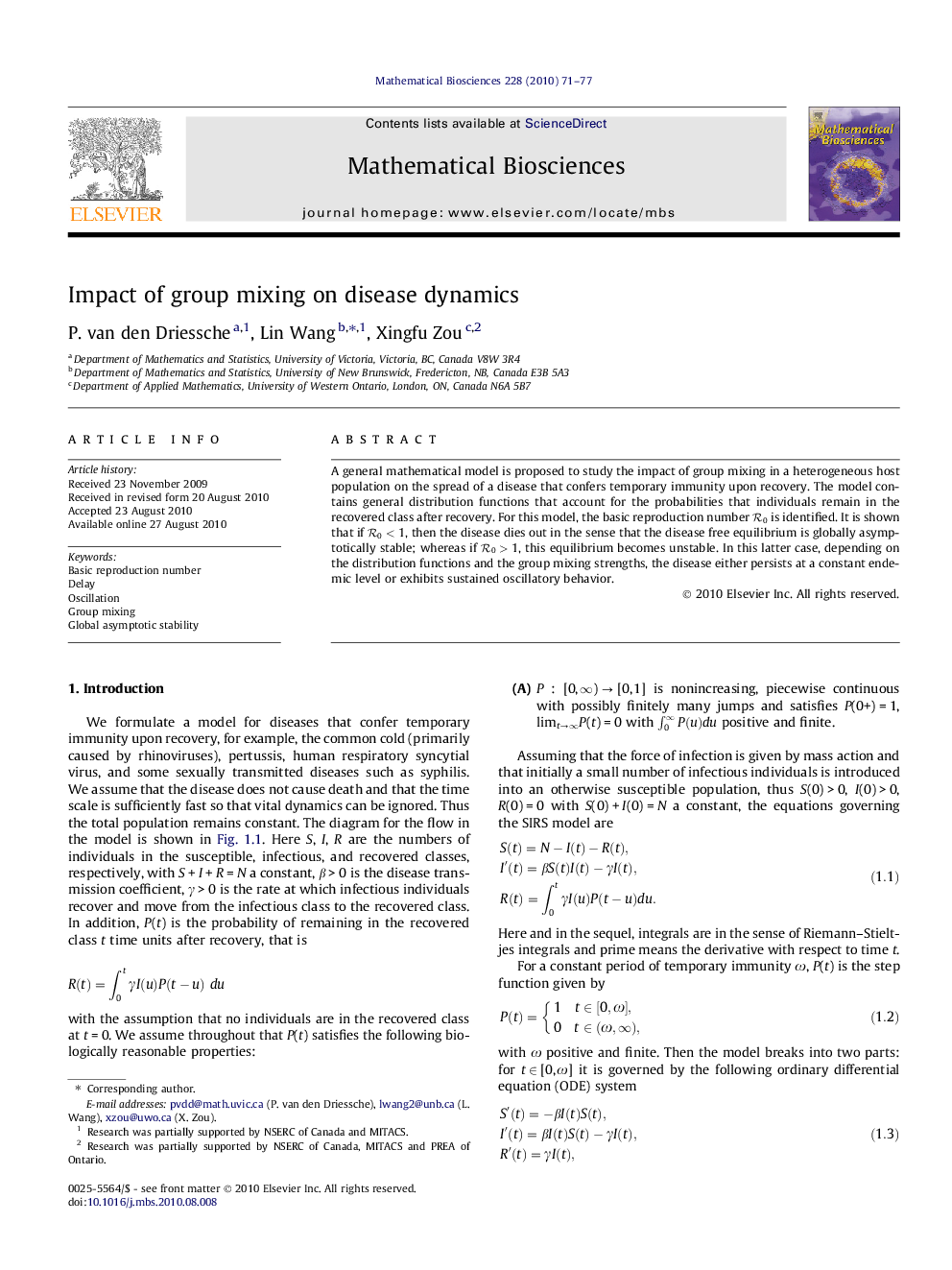| Article ID | Journal | Published Year | Pages | File Type |
|---|---|---|---|---|
| 4500524 | Mathematical Biosciences | 2010 | 7 Pages |
A general mathematical model is proposed to study the impact of group mixing in a heterogeneous host population on the spread of a disease that confers temporary immunity upon recovery. The model contains general distribution functions that account for the probabilities that individuals remain in the recovered class after recovery. For this model, the basic reproduction number R0R0 is identified. It is shown that if R0<1R0<1, then the disease dies out in the sense that the disease free equilibrium is globally asymptotically stable; whereas if R0>1R0>1, this equilibrium becomes unstable. In this latter case, depending on the distribution functions and the group mixing strengths, the disease either persists at a constant endemic level or exhibits sustained oscillatory behavior.
